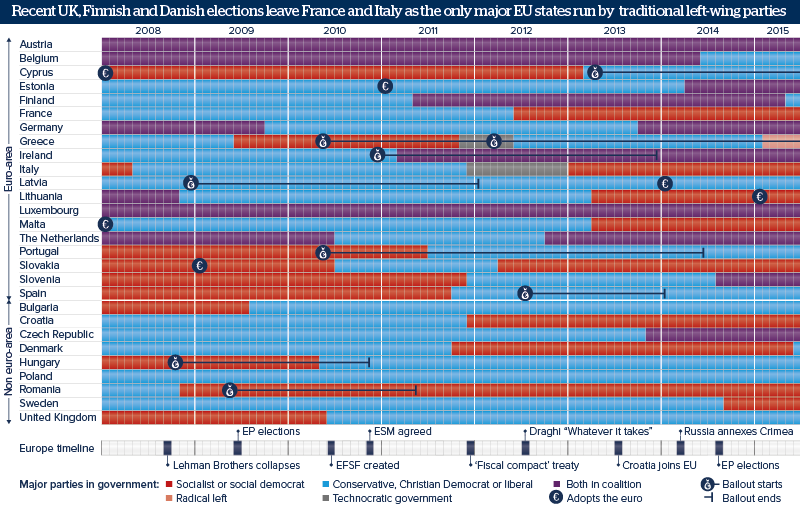Long-term shifts to weaken traditional EU left
Traditional left-wing parties are struggling for electoral success, despite the economic crisis

Source: Robert Schuman Foundation, Parties and Elections in Europe, European Commission, BBC
Outlook
In the euro-area, leftist parties are constrained by increasingly tight and institutionalised rules against deficit spending. Even outside it, as in the United Kingdom and Denmark, traditional left-wing parties are struggling to meet voters' concerns about economic insecurity and immigration. Where traditional left-wing parties pursue similar policies as the right, more space opens up for anti-establishment parties protesting against all mainstream forces. Left-wing parties are often doing better where they include a nationalist appeal, as in Slovakia.
Compared with their counterparts on the left, insurgent parties on the right appear to be more 'coalitionable' for traditional parties, giving the right new government formation options. The anti-immigration Finns Party has joined the new Finnish government; the Danish People's Party's equivalent decision is the crux of Denmark's current coalition talks.
Impacts
- Trade union membership is falling steadily, to an average 29% of employees in 20 EU states in 2012, from 33% a decade earlier.
- 63% of EU citizens associated positively with the term 'welfare state' in 2014, down from 71% in 2009, according to Eurobarometer.
- Long-term fiscal consolidation could see public sector workforces shrink, undercutting what has been a traditional left-wing voting base.
- The coalition potential of new leftist forces could be tested in Spain's end-2015 general election, where Podemos could be king-maker.